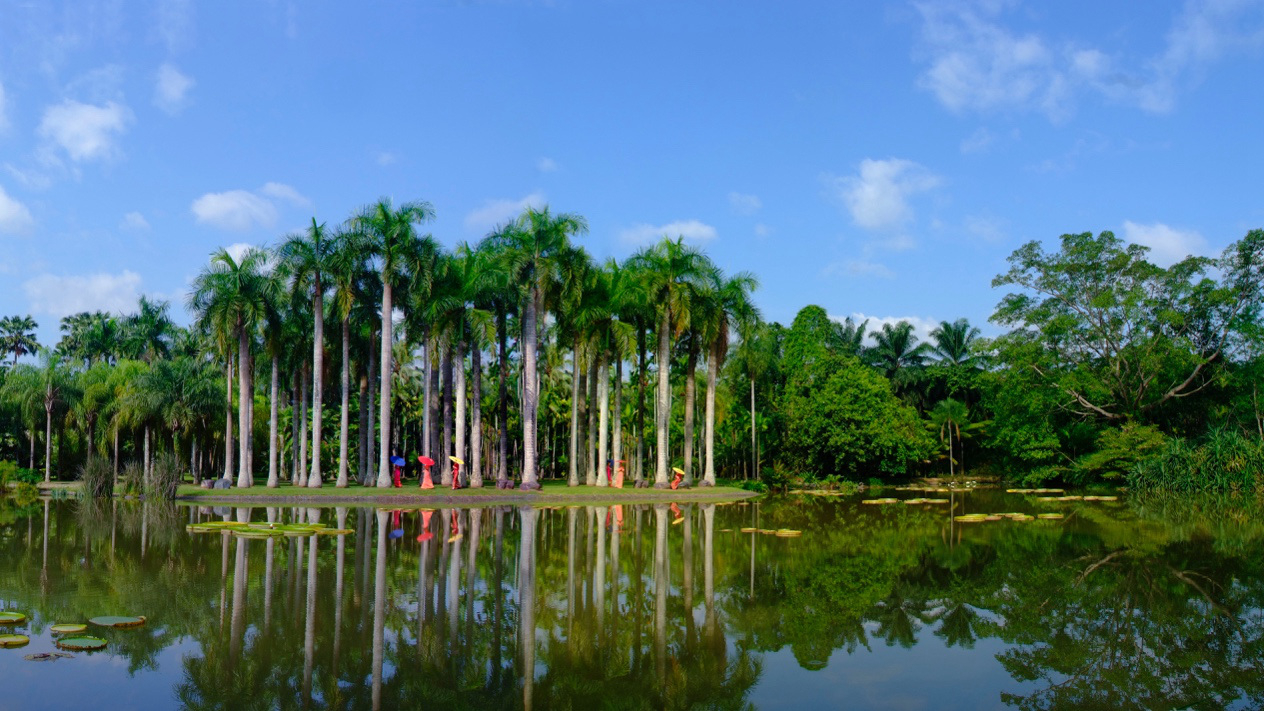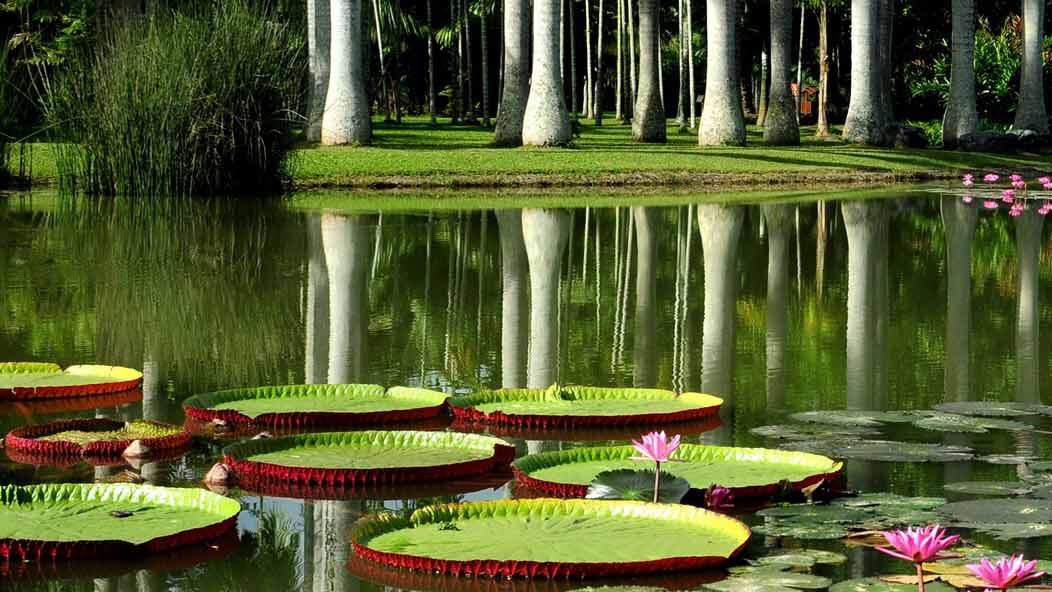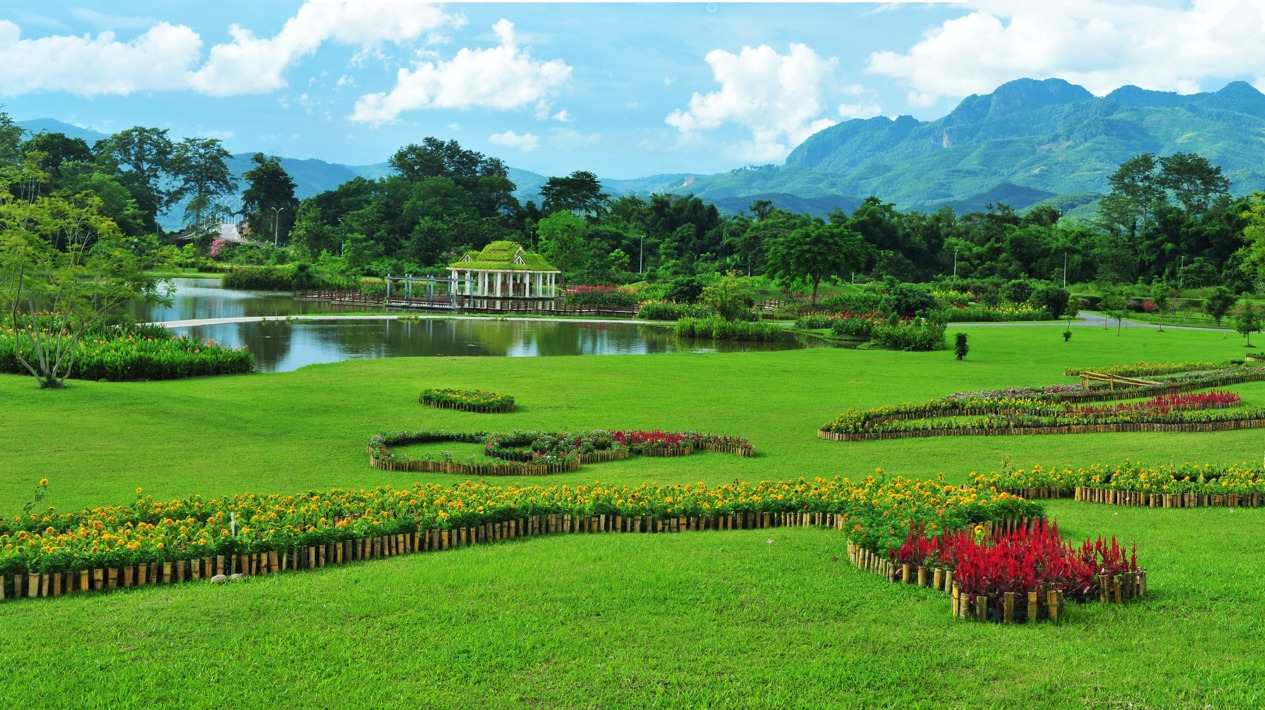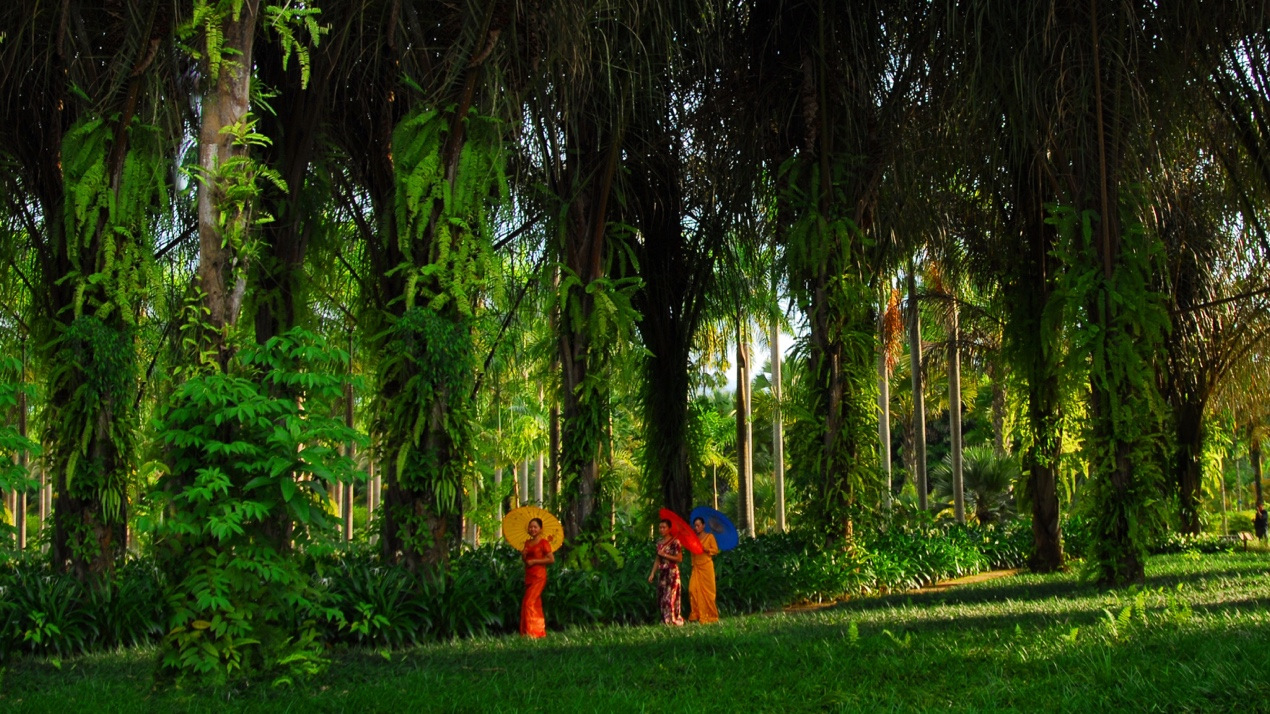03:09

Xishuangbanna Tropical Botanical Garden (XTBG) is located in Mengla County of Xishuangbanna Dai Autonomous Prefecture in southwest China's Yunnan Province. It is a national 5A tourist attraction, as well as a plant research institution affiliated with the Chinese Academy of Sciences.
XTBG was founded in 1959. Over the past six decades, the garden has developed into one of the biggest tropical botanical gardens in China and across Asia.
This plants research base probes into the impact of human activities and climate change on ecosystems as well as endangerment. It offers Master's and Ph.D. programs in ecology and plant sciences, as well as a professional master's degree program in biological engineering.

The Royal Water Lily is a huge aquatic plant that grows naturally in the Amazonian region of South America. One leaf grows to be about two meters in diameter. It's known to be buoyant enough to hold a child up in the water. /Photo by Duan Qiwu.
The Royal Water Lily is a huge aquatic plant that grows naturally in the Amazonian region of South America. One leaf grows to be about two meters in diameter. It's known to be buoyant enough to hold a child up in the water. /Photo by Duan Qiwu.
The garden covers over 11 square kilometers, including an area of 2.5 square kilometers of primary tropical rainforest. It fosters more than 13,000 species of plants in its 35 living collections. In the park, there are 37 special sections for plant growth, including the shade-growing plant section, the palm plant section, the water plant section and the banyan section, among others.

Xishuangbanna Tropical Botanical Garden has 37 different sections for plants. The photo above shows a section with diverse types of flowers. /Photo by Duan Qiwu.
Xishuangbanna Tropical Botanical Garden has 37 different sections for plants. The photo above shows a section with diverse types of flowers. /Photo by Duan Qiwu.
Professor Richard Corlett from Britain has been working at XTBG for seven years. He told CGTN that XTBG has about a third of the mammals and birds in China and about 15 percent of all plants in the country. Meanwhile, Yunnan Province has more than half of all species in China.
Professor Corlett has been piloting a "zero extinction" project to save natural plant species in Xishuangbanna. He believes that there are about 4,000 native plants in the region, and his team has been assessing data for the past five years. However, some of them still could not be found.

The Asian Openbill is a large wading bird in the stork family Ciconiidae. This bird mainly lives in the Indian subcontinent and Southeast Asia. But inside XTBG, you can easily find them. /Photo by Duan Qiwu
The Asian Openbill is a large wading bird in the stork family Ciconiidae. This bird mainly lives in the Indian subcontinent and Southeast Asia. But inside XTBG, you can easily find them. /Photo by Duan Qiwu
Situated on an island, the garden is surrounded by rivers and mountains that contain a wealth of rare and unusual plants. It is a plot of land about a mile wide formed by a river winding around it on three sides. The Luosuo River isolates the plants and protects them from wild animals. A bridge provides access from the town of Menglun.

More than one-third of Xishuangbanna's population are Dai ethnic people. This photo shows Dai women walking inside XTBG's palm trees garden. Photo by Zhu Min.
More than one-third of Xishuangbanna's population are Dai ethnic people. This photo shows Dai women walking inside XTBG's palm trees garden. Photo by Zhu Min.
Liu Guangyu, a veteran environment educator, has been working at this botanical garden ever since he graduated from the plant research institution 10 years ago. In an interview, he shared with CGTN that Chinese people are more inclined to approach nature and learn more about nature, as about two-thirds of Chinese are now living in cities, far away from natural habitat for plants and animals. And they opt to spend more on taking their kids closer into nature.
Xishuangbanna Tropical Botanical Garden has pledged to become one of the top level gardens in the world by 2020. Liu said that he's confident about fulfilling that goal, as he believes staff members at XTBG have always been following their inner hearts and working to do a better job every day.
(Cover image: XTBG's palm trees garden. /Photo by Zhang Fan)
(If you want to contribute and have specific expertise, please contact us at nature@cgtn.com.)






